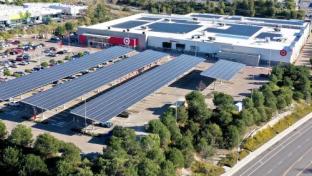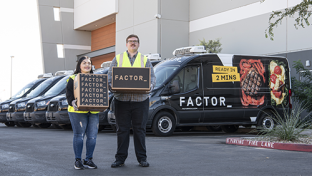Progressive Grocer Unveils the Retailers of the Century
All year long, Progressive Grocer has been celebrating a milestone: 100 years of service to the grocery industry. No other publication has been covering the grocery industry as long as PG, and no other publication was there reporting on store openings and other in-person events, on the ground, during one of the most challenging times in recent memory: the COVID-19 pandemic. So perhaps there’s no better time than now, PG’s 100th year, to turn the tables and celebrate the essential and critical players in U.S. food retailing over the past century.
Certainly, over the past two years, grocery retailers have had to reassess and adapt nearly every facet of their operations. Changes to the grocery landscape will continue, shaped by both macroeconomic factors and those pesky, always-changing consumer preferences. PG surveyed the competitive landscape over the past century to identify those companies that have prioritized innovation, differentiation and community service through every conceivable (and previously inconceivable) operational challenge — and thrived. We are thrilled to honor the ingenuity, courage and drive of each of the following 11 food retailers with a Retailer of the Century Award, as well as to acknowledge some honorable mentions.
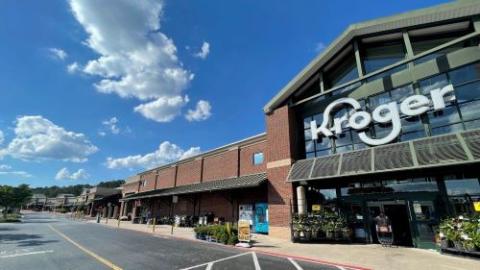
The Kroger Co.
Bernard Kroger never could have known what challenges awaited grocery retail when he opened his first store in 1883 in Cincinnati, the company’s hometown to this day. Yet wars, global pandemics, supply chain disasters and labor shortages have been no match for Kroger. The $138 billion grocery chain, which saw an earnings boost during the pandemic, is still rocking impressive growth as its 60 million customers keep cooking at home and loading their pantries to save money. Today, there are nearly 2,800 Kroger stores operating under a variety of banner names spread across 35 states. The company has been at the forefront of retail technology innovation by opening robotic warehouses to serve customers in places where the company has no stores.
CEO Rodney McMullen attributes Kroger’s ability to navigate the peaks and valleys of the pandemic to staying true to the company’s core values: growing the food business through the competitive moats of innovation, technology, partnerships and people; leveraging assets such as data, retail media, retail health, fuel and personal finance, which are margin accretive and have clear paths to additional growth outside of the traditional grocery segment; investing in other assets to drive sales growth, which in turn generates data and traffic that enable fast-growing alternative profit streams; and using free cash flow to invest in the business to drive net earnings growth. This flywheel creates value for shareholders and confidence in growth, both of which enable funding of capital projects to grow the business and increase dividends and shareholder return. Then there are its impressive efforts on the environmental, social and governance (ESG) front and amazing private label portfolio, the latter of which is currently helping the retailer attract droves of inflation-stressed shoppers.
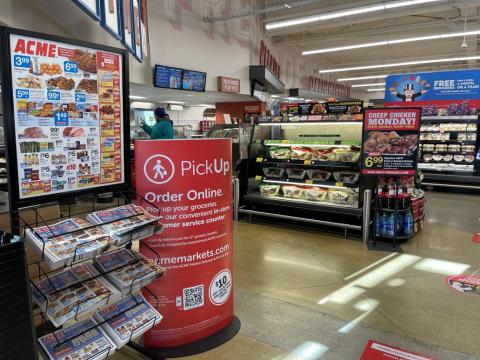
Albertsons Cos.
Nearly two years after going public, Albertsons Cos. today is focused on reimagination. You could say it has always been this way, however. Founded in 1939 in its current headquarters city of Boise, Idaho, by Joe Albertson, the $72 billion grocery chain operates 2,273 stores in the United States under a variety of banner names that date to the early 1900s, including Shaw’s, Acme, and Jewel-Osco. Some of those banners were reimagining grocery during the late 1800s. The current company has entered a new phase predicated on the belief that satisfied customers create outsized lifetime value and should become “Customers for Life.” The grocery chain is embarking on a five-pronged strategy designed to place the customer at the center of everything it does, with the ultimate goal of supporting customers every day, every week and for a lifetime.
The multifaceted strategy includes digitally connecting and engaging customers through the mobile app and website so they can enjoy curated experiences in e-commerce, the community, loyalty, health and media; differentiating the store experience by deepening engagement using technology, removing associate pain points to allow them to focus on customer service versus just tasks; elevating the retailer’s distinctiveness in fresh by expanding private-brand products and services, and enhancing product offerings in center store to address customers’ changing needs and preferences; modernizing capabilities through an improved supply chain, enhanced data and data analytics, and ongoing productivity, all built on the foundation of being locally great and nationally strong; and further embedding ESG throughout operations.
According to CEO Vivek Sankaran: “At Albertsons Cos., we strive to retain the rich history of each banner while enabling customers to benefit from national programs and technologies like the Albertsons for U app, FreshPass, and our DriveUp & Go curbside pickup offerings. Our goal is to provide every customer with great, personalized service and inspiration around food and well-being. Working to earn their deep trust will help us build relationships and earn customers for life.”
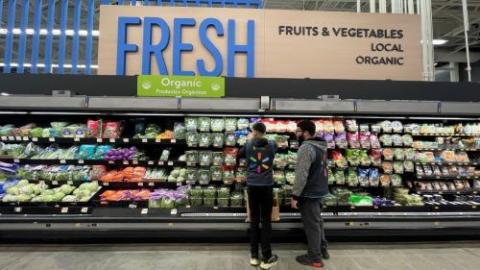
Walmart Inc.
Especially in hard times, Walmart keeps growing. That’s never been more true than throughout the pandemic and this year, the Bentonville, Ark.-based retailer’s 60th birthday. The country’s No. 1 seller of food and consumables is just getting started on a whole new business model perfectly suited for hard times and poised to drive even more growth: one that leverages the company’s multibillion-dollar investments in store experience; product assortment, including wonderful private label items; digital convenience; and sustainability.
“For 60 years, we have remained committed to providing our customers with high-quality items at everyday low prices,” says John Laney, SVP, center of store. “We are constantly innovating and listening to our customers to bring new and exciting items that fit into their evolving taste preferences and shopping behaviors. With 90% of Americans living within 10 miles of a Walmart store, we want to ensure their shopping experience is convenient and easy whether they are going in-store for their weekly trip, ordering groceries online or having them delivered to their home.”
The company with $559 billion in annual revenue now generates about 60% of that revenue from selling food and consumables across a footprint of 5,342 locations, many of which have been getting a redesign. Having presciently debuted online grocery pickup back in 2013, the retailer more recently debuted Walmart+, which offers members several benefits that supplement their shopping experience, including the ability to skip lines with Scan and Go, getting discounts on gas, and having groceries delivered directly to their homes in a matter of hours.
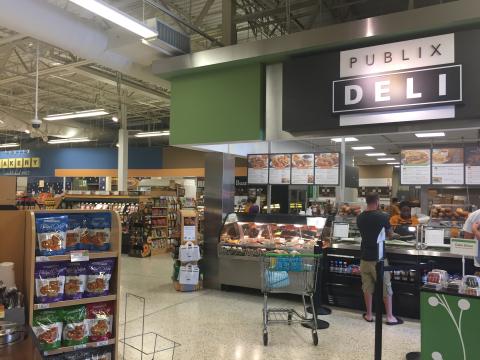
Publix Super Markets
On Sept. 6, 1930, George Jenkins opened the door to the first Publix store in Florida. Today, the Lakeland, Fla.-based company has more than 1,300 locations in the Southeast and is the largest regional grocer in North America. The $48 billion retailer is also the largest employee-owned company in the country, and regularly earns accolades for initiatives focused on its 230,000 employees, philanthropy, local communities and the environment.
In April 2020, at the start of the COVID-19 pandemic, Publix realized that produce and dairy farmers were plowing under or dumping products due to unexpected closures of schools, restaurants and hotels. At the same time, Feeding America shared that it was seeing increases in demand at food banks as high as 600%. Publix saw an opportunity to help both farmers and families, and the company did just that. Within 10 days, Publix had begun purchasing produce and milk from Southeastern farmers and donating the product directly to Feeding America affiliates in Florida. Publix soon expanded the program to support food banks throughout the company’s seven-state operating area. From April 2020 through April 2022, Publix purchased and delivered more than 50 million pounds of fresh produce and nearly 550,000 gallons of milk to its food bank partners.
Beyond nourishing its communities, shoppers tend to heap the most praise on the company’s customer service, clean-freak-clean stores and tasty prepared foods, including its famous “pub subs.” On social media, it’s common to see shoppers leaving kind comments about the grocer. One lifelong customer recently shared her fond memories, concluding, “I’m 74 and I still shop at Publix!”
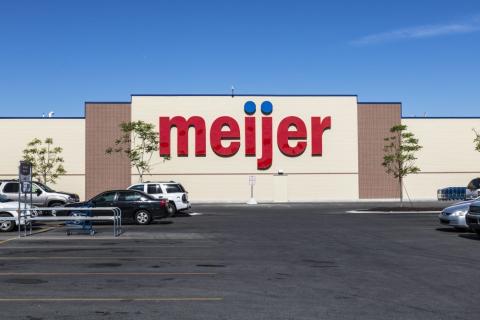
Meijer Inc.
Walking into the Meijer Heritage Center inside the retailer’s Grand Rapids, Mich., corporate headquarters, visitors pass a wall emblazoned with quotes from company founders and leaders. There, in big red letters, is one of the best-known quotes attributed to Frederik Meijer: “Customers don’t need us, we need them.” That turn of phrase exemplifies Meijer’s approach to the grocery business, from its innovative store formats to way that it treats shoppers, employees and communities at large. Since Fred Meijer, at the age of 14, helped his parents, Gezina and Hendrik, open their first store in Greenville, Mich., in 1934, the business has turned on what the retailer can best do for its customers. To this day, the Meijer organization is more outward facing. That’s true in even the smallest details, such as the way employees at all corporate and store levels wear name tags not just for security reasons, but also to greet one another on a first-name basis. And yes, that applies current CEO Rick Keyes.
Operating 262 stores across a Midwest footprint and with reported revenues of nearly $19.6 billion in fiscal 2021, family-owned Meijer continues to hone its customer-centric model. Some 60 years after unveiling the first Meijer Thrifty Acres — credited as the first supercenter in the United States — the retailer is about to launch Meijer Grocery, midsized neighborhood stores that are between traditional full-scale Meijers and the chain’s handful of smaller urban market locations.
“Meijer built its legacy upon bold choices and innovation in the face of difficult circumstances,” asserts Keyes. “Hendrik and Fred Meijer opened our first store during the Great Depression to feed their neighbors and support their community. They then took another profound risk by pioneering the first-ever supercenter 60 years ago. That spirit of innovation, driven by a passion for serving our customers and communities, is what continues to drive us today.”
He continues: “At Meijer, one of our greatest strengths is our ability to take risks and make investments with an eye to the future, rather than making decisions based on short-term gains and losses. From opening new store formats to expanding the many ways we offer our customers to shop our stores digitally and in person, that drive for innovation continues to push us, especially when times are difficult and our community needs us most.”
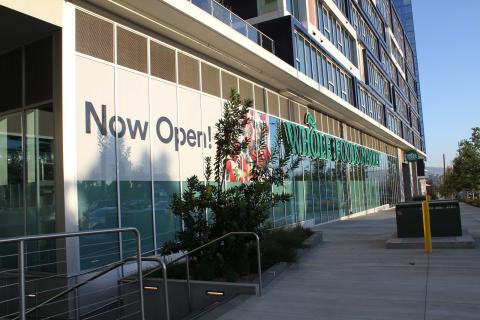
Whole Foods Market
The story of Whole Foods Market began in 1978 in Austin, Texas, with a guy who just wanted to sell natural foods as a way to nourish people and planet at the same time. Forty-four years and 500 stores later, that core value remains the same. The world’s first certified-organic grocer has been credited with innovations such as mainstreaming natural, organic and plant-based foods and setting the bar ever higher for food sourcing and supplier standards. According to the company’s new CEO, Jason Buechel, who began his tenure as the still Austin-based company’s third chief executive on Sept. 1, nourishing people and planet is “not just writing on the walls. It’s alive in our stores, embedded in our culture, and it serves as our North Star.”
That mission now has some help from Amazon, which acquired the retailer in 2017 in a $13.7 billion deal that’s still reverberating through the grocery industry today. Since merging with the Seattle-based e-comm giant, Whole Foods has cut some prices, rolled out self-checkout, and changed the way it offers delivery and pickup. It has also launched Amazon’s cashier-less Just Walk Out tech in some stores, among other moves.
“We are extremely proud of what our team members, customers and supplier community have accomplished together since we started more than 40 years ago,” notes SVP of Operations Bill Jordan. “When the first Whole Foods Market opened, there were less than half a dozen natural food supermarkets in the U.S. Since that time, our industry-leading quality standards and sourcing practices have had a tremendous impact on the food landscape — and we continue to raise the bar for the industry.”
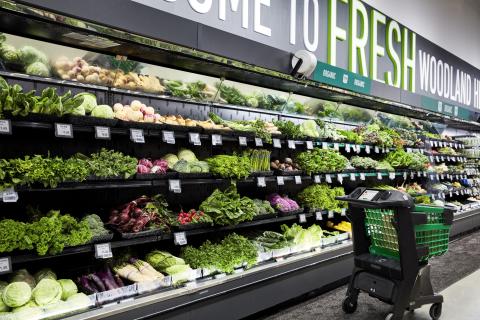
Amazon
Amazon started selling groceries on its website in 2006. Sixteen years later, the Seattle-based e-commerce giant is close to truly transforming grocery with its Amazon Fresh supermarket format. Since the company launched the format in Woodland Hills, Calif., in August 2020, 44 Amazon Fresh stores have opened in eight states and the District of Columbia, and Amazon reportedly has plans to open dozens, if not hundreds, more in major U.S. metros in the next three years. Amazon Fresh stores, which range in size from 25,000 to 45,000 square feet, join the company’s other U.S. physical locations selling food and consumables, including Whole Foods Market and Amazon Go stores.
Amazon recently hired Tony Hoggett, a veteran of British supermarket chain Tesco, to lead its grocery ambitions.“We’re incredibly honored to be selected as a Retailer of the Century by Progressive Grocer,” Hoggett says. “Amazon has been innovating across the grocery space for many years, learning from customers and developing new offerings along the way. We now operate a large online grocery business across 5,000 cities/towns through Amazon Fresh and Whole Foods Market, plus we have over 530 Whole Foods Market stores and over 60 Amazon Fresh stores. Whole Foods Market remains the pioneer and leader in natural and organics, and Amazon Fresh delivers a wide selection of groceries and high-quality freshly prepared foods at low prices, whether you’re shopping in-store or online. We’re delighted with the customer reception to Amazon Fresh stores, and we look forward to growing our store footprint while continuing to learn from customers along the way. We’ve built a strong grocery leadership team, and we’re excited about what we can deliver for customers through both Whole Foods Market and Amazon Fresh.”
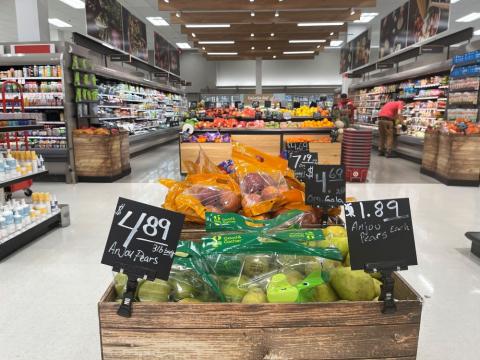
Target Corp.
Target has been affectionately known as “Tar-zhay” by its guests since it was founded in the 1960s, and it has been building on that legacy ever since. Today, the Minneapolis-based retailer, long known for making style accessible to all, has become a go-to for grocery shoppers with its magic mix of ease, value and inspiration. In the process, its fast-growing food and beverage business is delivering on Target’s purpose of helping all families discover the joy of everyday life.
In 2021, Target delivered record sales — $106 billion in total revenue — and deepened trust with guests as food and beverage delivered record growth on growth. Target’s food and beverage business generated more than $20 billion in sales last year and has hit double-digit comp-sales growth in nine of the last 10 quarters. Since launching in August 2019, Good & Gather, Target’s flagship owned food and beverage brand, has quickly become its No.1-selling food brand, generating more than $2 billion in sales in 2021. Meanwhile, Favorite Day, a Target owned food and beverage brand that debuted in 2021 and offers sweet and savory indulgences, continues to build momentum among guests. The food and beverage business also plays a big part in Target’s commitment to diversity, equity and inclusion. With plans to end the year with 50 Black-owned food and beverage brands on its shelves, Target will have quadrupled the number of Black-owned brands in its grocery assortment since 2019. Last but not least, Target’s omnichannel strategy is making it easier than ever for guests to shop for foods and beverages.
“Over the last few years, Target has transformed from a company that sells food and beverage to one that celebrates food and beverage, and we’re honored to be recognized as a retailer of the century,” says Rick Gomez, EVP, chief food and beverage officer. “We are one of the biggest digital grocers in America, our guests absolutely love what we’re doing with our owned brands like Good & Gather and Favorite Day, and the scores of grocery industry experts we’ve hired are helping us raise the bar in everything we do. Today, food and beverage is truly a gateway to the entire Target experience — and there’s a lot more to come.”
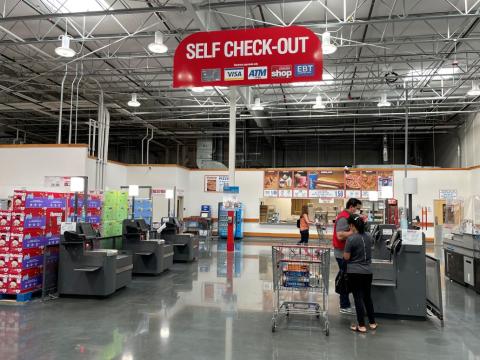
Costco Wholesale
Is there anything more astonishing this year than the fact that Costco hasn’t raised the price of its $4.99 rotisserie chicken? Costco’s loss-leader, vertically integrated chicken has stood firm against a deadly pandemic, supply chain gridlock and now historic inflation. The chicken is so popular among Costco members that it even has its own Facebook fan page, with more than 19,000 followers.
It’s just one reason that the retailer with a footprint of 564 locations has a highly loyal base of 117 million members. Costco’s business model, born in Seattle in 1983, is designed to provide value, offering national and regional brands priced below traditional wholesale or retail outlets to members, who pay an annual fee. Issaquah, Wash.-based Costco, whose U.S. business generates $142 billion annually, also has one of the most successful private brands in history: Kirkland Signature. Kirkland raked in $58 billion in sales during Costco’s latest fiscal year, making up around a quarter of the company’s total revenue. It’s America’s biggest consumer packaged goods brand, measured by sales.
“Maintaining consistent product quality, competitive pricing and availability of Kirkland products is essential to keeping members loyal to Costco,” the company said in its annual filings. “If Kirkland experiences a loss of member acceptance or confidence, sales and profit margins may suffer.” For his part, CFO Richard Galanti notes: “If you get 99 things right and one thing wrong, people are going to remember the one thing. So you don’t get it wrong. From an opportunity standpoint, Kirkland is known. It’s a brand.”
Costco is also known for paying its employees well (its average wage is $17.73 an hour). Further, about two-thirds of the company’s selling and general administrative expenses go to employee labor and benefits. Here’s the bottom line: Costco has revolutionized grocery shopping by making every customer visit feel like an exclusive experience, a treasure hunt and a really great value all at the same time.

Ahold Delhaize
The Zaandam, Netherlands-based operator of 7,452 stores with more than 400,000 employees came into existence in July 2016 when Dutch company Royal Ahold and Belgian firm Delhaize Group merged. The banners of Ahold Delhaize’s U.S. business, Ahold Delhaize USA, have much longer histories, however. The company’s “family of great local brands” comprise Food Lion, FreshDirect, The Giant Co., Giant Food, Hannaford, The Stop & Shop Supermarket Co., Peapod Digital Labs, and Retail Business Services.
In 2021, Ahold Delhaize USA reported annual sales of $53.7 billion, up 3.6% from 2020. U.S. online sales at the company were up 16.4%. Although the increase wasn’t as strong as the 61% jump in the prior-year quarter, it was an impressive feat nonetheless, considering an economic environment in which shoppers are counting every penny due to historic inflation, and e-commerce sales overall have been slowing.
In the United States, Ahold Delhaize now has more than 1,400 online grocery pickup points, and it has also added new instant-delivery options with partners such as Instacart. Last November, The Giant Co. opened a new state-of-the-art direct e-commerce fulfillment center in Philadelphia to serve more customers in the City of Brotherly Love and — for the first time in its 98-year history — southern New Jersey. Ahold Delhaize USA has also been busy putting into place a supply chain transformation plan since 2021, a three-year journey to establish an integrated self-distribution network to support the division’s omnichannel growth. In March, the company shared that it had converted its first facility of 2022 into a self-managed network, in Bethlehem, Pa., bringing the total number of network facilities to 21.
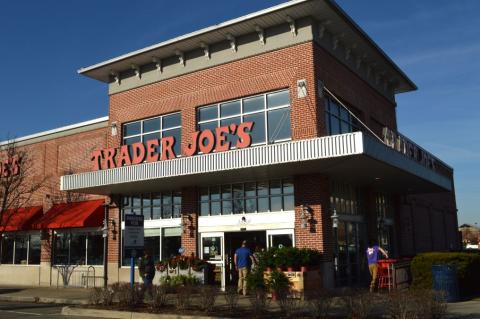
Trader Joe’s
The Trader Joe’s way of retailing is to make the grocery shopping experience feel like a trip around the world. The Monrovia, Calif.-based chain, born in 1967 and now with 500-plus stores and $15 billion in annual sales, is beloved by shoppers across 42 states for its panoply of private label items sourced from such exotic places as Thailand, France and Brazil. In fact, Trader Joe’s is credited with making private-brand foods cool again. Mandarin orange chicken, chocolate chip Dunkers cookies and cranberry oatmeal are just a few of the items with cult followings among shoppers. Now, with autumn in full swing, shoppers are lining up for the retailer’s famous pumpkin spice and apple cider products, many of which create some serious buzz on social media. This year, new fall-themed goodies include pumpkin cream cheese, Honeycrisp apple candles, pumpkin overnight oats and a pumpkin overnight face mask.
The founder of Trader Joe’s, Joe Coloumbe, revealed in a 2021 posthumous memoir how he turned a store into a national obsession: He didn’t allow suppliers to pay for specific store placement and created a whimsical in-store atmosphere that makes customers feel relaxed and happy. It’s a strategy that keeps working even for a grocer with no e-commerce presence whatsoever.
The company recently explained on its popular podcast how it survived the pandemic-driven e-comm surge without digital options. “While other retailers were cutting staff and adding things like self-checkout, curbside pickup and outsourcing delivery options, we were hiring more crew, and we continue to do that,” said Trader Joe’s Marketing Director Tara Miller. “We know that this period of distancing will end, and when it does, our crew will be in our stores to help you find your next favorite product, just as they’ve always been.”
Honorable Mentions
While PG celebrates 11 Retailer of the Century honorees, we would be remiss not to honor the success of other food retailers that have made tremendous impacts on the industry during the past 100 years.
Wakefern Food Corp.
Founded in 1946, Wakefern Food Corp. has become the largest retailers’ cooperative group of supermarkets and the fourth-largest cooperative of any kind in the United States. Keasbey, N.J.-based Wakefern consists of nearly 50 member companies that independently own and operate more than 360 retail supermarkets under the ShopRite, Price Rite Marketplace, The Fresh Grocer, Dearborn Market, Gourmet Garage and Fairway Market banners in New Jersey, New York, Connecticut, Pennsylvania, Delaware, Maryland, Massachusetts, New Hampshire and Rhode Island markets.
Wegmans Food Markets
Founded in 1919 in Rochester, N.Y., and still based there, Wegmans today operates 108 stores across the East Coast and inspires a rabid fan base of loyal shoppers who cram the company’s supercenter-size stores for items like fresh truffles, chocolate chip cookies made with butter, and organic chicken dog treats.
H-E-B
H-E-B began in Kerrville, Texas, with one family-owned store. Today, the San Antonio-based company is still family-owned but operates more than 400 locations across Texas and Mexico, all of which offer grocery pickup and delivery. H-E-B is virtually a religion in Texas — is there any other grocery retailer in the United States that opens stores with drive-thru barbecue restaurants?
Hy-Vee Inc.
Hy-Vee founders Charles Hyde and David Vredenburg had a goal to provide “good merchandise, appreciative service and low prices” when they opened a small store in Beaconsfield, Iowa, in 1930. Today, the West Des Moines, Iowa-based company has more than 240 stores and is celebrated not just for its produce, meat and dairy, but also for its community initiatives focused on wellness and hyper-local products.
Aldi
Aldi may not have gotten its start in the United States, but it’s now an international phenomenon, with nearly 7,000 stores spread across 11 countries. In the United States, where the German deep-discount retailer is based in Batavia, Ill., there are more than 2,200 stores in 36 states. About 90% of its 1,400 products are private label, and stores are smaller and easy to shop. It’s an even more popular destination these days for shoppers as grocery prices have shot up.



